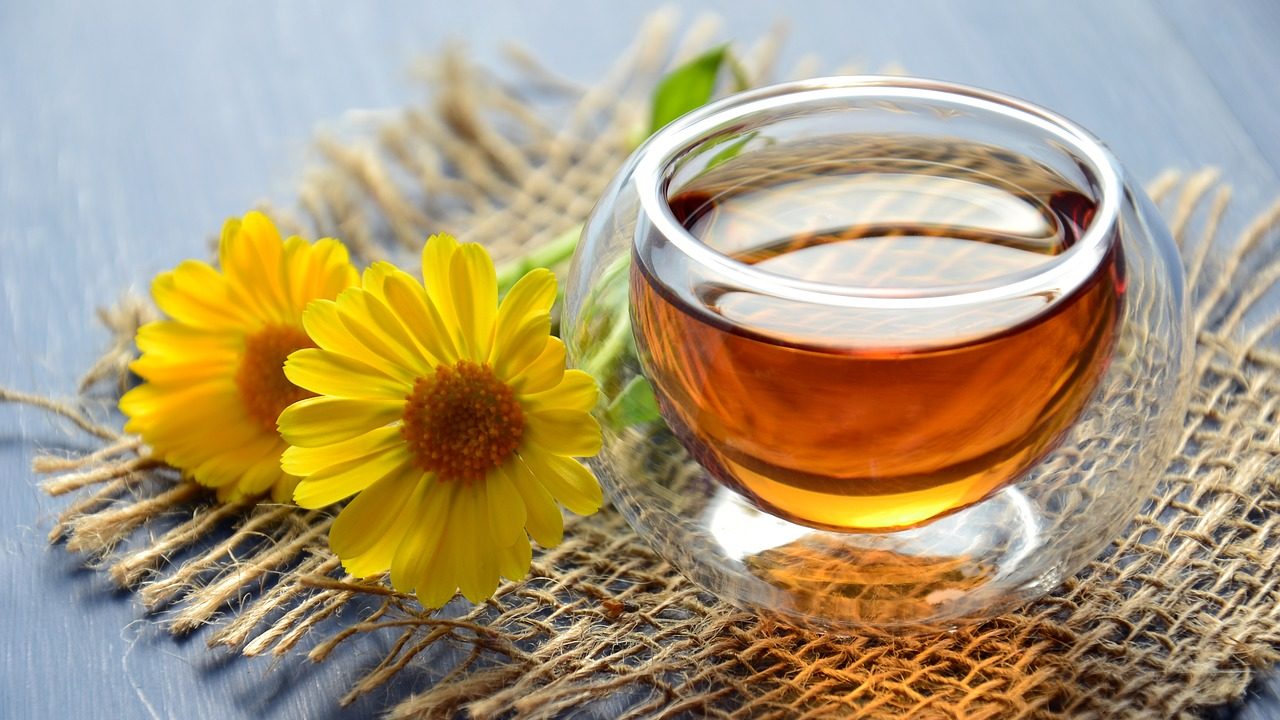About tea
What is the difference between black and green tea?
Black and green tea is made from a leaf of Camellia Sinensis. The difference is due to the processing of the leafs. The color difference is the result of the natural fermentation process. During this process, the cellular fluid of the previously withered and twisted leaves is exposed to air. With the help of the enzyme oxidase, the cell fluid undergoes various biological reactions. Therefore, the color of the leaves changes from bright green to brown. Fermentation was done only for black tea, while green tea is used to steam the leaves in order to soften the leaves to deactivate the enzymes needed for spinning and fermentation, so that the leaves retain their green color. Green tea has been popular in Asia for centuries, where its many beneficial effects are known. There is a growing interest in the benefits of tea in the Western world as well.

Is herbal tea / herbal tea similar to traditional tea?
In preparation mode, more or less yes. They differ, of course, in that they are not made from the leaves of the Camellia Sinensis family, but from the leaves, inflorescences and fruits of various herbs. Popular herbal tea ingredients are chamomile, peppermint or rosehip.
Cooking and storage
What is the best way to store tea?
In its original sealed packaging, the aroma of the tea remains unchanged for two years. After unpacking, store in a cool, dry and preferably dark place.
How can tea be best served?
One of the best solutions is to offer tea from a can. Choose your teapot carefully because its substance can affect the taste of your tea. The best material is porcelain or glass. Tea filled in porcelain cups is the most delicious. The brilliant shine and hues of the drink work best in beautiful cups. The ideal consumption temperature is 60 C˚.
Sometimes tea is bitter. What is the reason for this?
It is recommended to boil the water for more than five minutes, during which time most of the calcium and magnesium mineral salts will precipitate on the side of the vessel.
If we make our tea with the water we get in this way, we will get a much better quality drink than if we just pour boiled water on it.
Why is a thin layer sometimes formed on the surface of the tea?
This is related to the hardness of the water used for the tea. Questions about water hardness are usually available from waterworks.
Tea and health
I heard that tea contains caffeine. Is this true?
All black and green teas contain caffeine - approximately 30 mg per cup - so Pickwick flavored black teas and the green tea family also contain caffeine. However, Pickwick’s real fruit teas, the Herba tea family, Spices tea, and the revamped Children’s Tea are caffeine-free. Does traditional black tea contain flavor? No. Tea is a one hundred percent natural product. We do not add flavor to traditional black tea. Is there tannic acid in the tea? Yes. Tannic acid slows down the absorption of caffeine, so its stimulant effect is slower but lasts longer than that of caffeine in coffee.
Do tea blends contain artificial flavors?
None of the Pickwick teas contain artificial flavors.
Is it a smart thing to drink tea before bed?
Caffeine has a mild stimulant effect, but most people can safely drink a cup of tea before falling asleep. If you are sensitive to caffeine, we recommend that you do not drink tea at bedtime. If you don’t want to consume caffeine at all, choose from our decaffeinated products: try our Pickwick Lifestyle teas and our Pickwick real fruit teas, or our Kids ’Teas.
What other ingredients does tea contain?
Tea contains minerals, polyphenols, including catechins, which are antioxidants. Consumed without sugar and milk, it is calorie-free and can be a good supplement to your diet.
Is tea good for kids?
Tea also relieves thirst in children. Tea without sugar or milk contains almost no calories and can be consumed throughout the day.
[Forrás: https://www.pickwick.hu/gyakori-kerdesek]
